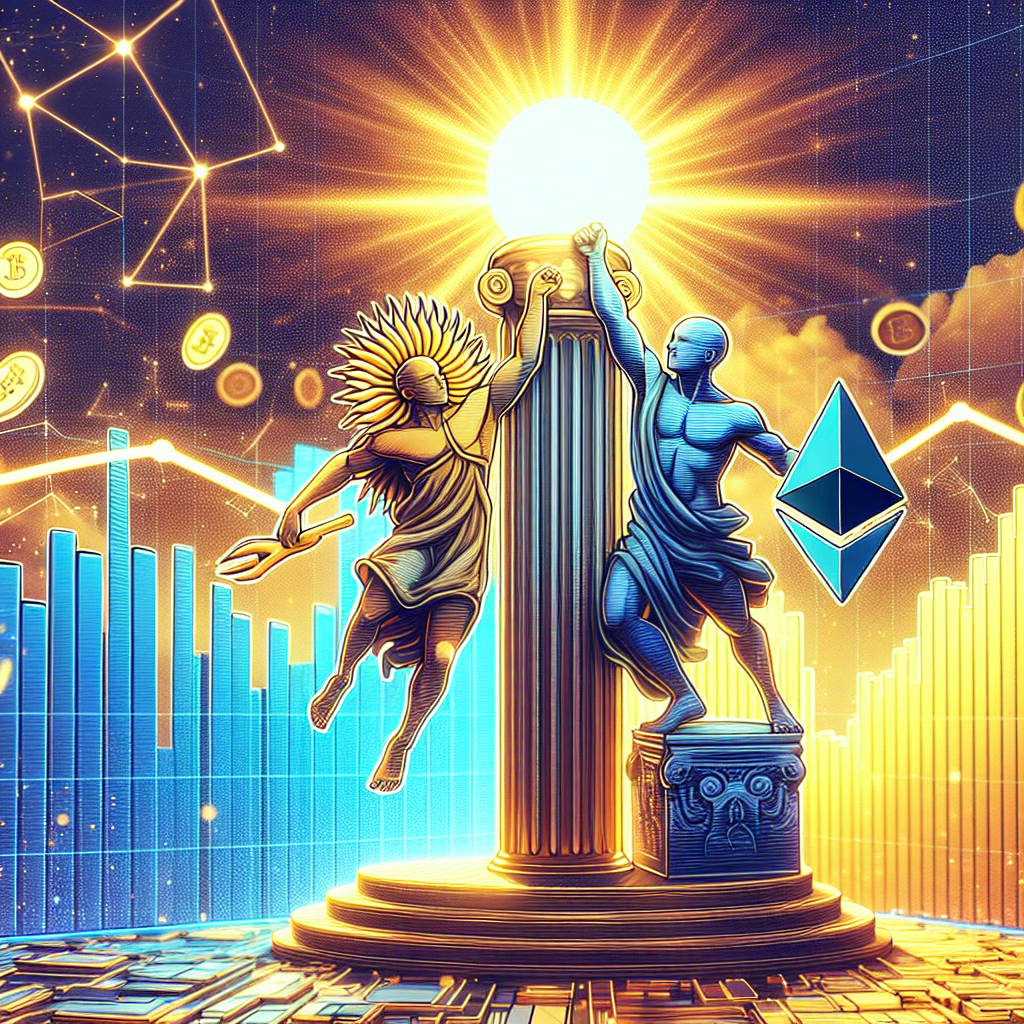Solana Surpasses Ethereum in Staking Market Cap Briefly
In a remarkable turn of events within the blockchain and cryptocurrency landscape, Solana (SOL) recently managed to briefly exceed Ethereum’s (ETH) staking market cap. This milestone is a significant indicator of the competitive landscape among layer 1 blockchains and raises intriguing questions about the future of staking in the cryptocurrency ecosystem. As the stakes become higher and more lucrative, it is essential to dissect what this shift means for both Solana and Ethereum, as well as for the broader crypto market.
The Context of the Staking Market
Staking has become an increasingly popular method for investors to earn passive income through their cryptocurrency holdings. Investors lock up their assets in a blockchain network in exchange for rewards, which can vary based on factors like network activity and the number of validators. In the case of Ethereum, the transition from proof-of-work (PoW) to proof-of-stake (PoS) has significantly influenced its staking economy, providing new opportunities for holders, unlike before.
On the other hand, Solana has been making headlines for its rapid expansion and increasing user adoption. With its high throughput and low transaction costs, Solana has gained favor among developers looking to build decentralized applications (dApps) and DeFi protocols. The recent surpassing of Ethereum’s staking market cap by Solana, even if fleeting, highlights the competitive nature of the industry and the potential shifts that can occur.
What Led to Solana’s Brief Ascendancy?
The rise of Solana’s staking market cap can be attributed to several factors:
- Increased Adoption: Solana has seen a surge in traffic due to its attractive features, drawing new users and investors into its ecosystem.
- DeFi and NFT Growth: The rise in decentralized finance (DeFi) protocols and non-fungible tokens (NFTs) on Solana has drawn considerable interest, which directly affects the staking landscape.
- Competitive Rewards: Solana’s staking rewards are often higher than those offered by Ethereum, making it more appealing for those looking to maximize returns.
These factors combined have led to a notable increase in the amount of SOL locked in staking protocols, pushing its staking market cap ahead of Ethereum for a brief moment.
The Impact on Ethereum
Ethereum’s response to Solana’s ascendance in the staking market indicates the ongoing battle for dominance among blockchain networks. It is crucial to decipher how this competition affects Ethereum, a pioneer in the smart contract space, as it moves forward in its transition to Ethereum 2.0.
- Pressure to Innovate: As Solana gains traction, Ethereum must ramp up effort to improve scalability and reduce transaction fees, key areas where Solana excels.
- Community Reaction: There’s a growing concern within the Ethereum community regarding its long-term viability in the face of rising competitors like Solana and what this means for their staking ecosystem.
- Increased Staking Participation: To retain dominance in the staking sector, Ethereum may need to incentivize higher participation rates within its network, ensuring that rewards remain lucrative.
The competition spurred by Solana’s brief rise could provide the necessary motivation for Ethereum developers to innovate further, ensuring that Ethereum remains a robust contender in the cryptocurrency space.
Why Solana’s Position is Not Just About Numbers
While Solana’s brief surpassing of Ethereum’s staking market cap is a notable achievement, it’s essential to understand that market cap is just a number. Numerous underlying factors contribute to the success of a blockchain project, and while staking market cap is a key metric, examining the reasons behind the numbers is vital.
- Technology and Adoption: Solana’s technology offers unique advantages like high throughput (thousands of transactions per second) and low fees, which are critical for user adoption, especially in burgeoning sectors like gaming and DeFi.
- Environmental Considerations: With cryptocurrency mining being criticized for its environmental impact, Solana’s energy-efficient consensus mechanism may attract eco-conscious investors.
- Developer Engagement: The speed at which developers are building on Solana compared to Ethereum can paint a clearer picture of the long-term ecosystem viability.
These factors could ultimately define the landscape of both staking and overall usage in the blockchain sector.
The Future of Staking in Cryptocurrency
With Solana momentarily taking the upper hand in staking market cap, it raises questions about the broader future of staking in cryptocurrency. Staking is evolving, and with it comes new challenges and opportunities for projects in the space.
- Interoperability: As multiple layer 1 solutions become popular, interoperability will play a crucial role in creating a seamless staking experience for users across different platforms.
- Layer 2 Solutions: As seen with Ethereum, the rise of layer 2 solutions like Polygon may also play a part in the staking ecosystem, allowing users to engage with more efficient transactions and staking opportunities.
- DeFi Interfaces: Improved user interfaces and platforms that allow for easier staking will encourage wider adoption among crypto investors who may be hesitant at present.
The evolution of the staking landscape will continue to see changing dynamics as more blockchains enter the arena, each vying for user attention and liquidity.
Conclusion: A Competitive Landscape Ahead
Solana’s momentary flip of Ethereum in staking market cap underscores the ever-changing and competitive nature of the cryptocurrency market. While Solana has recently gained attention and traction, it serves as a reminder of how quickly the landscape can shift. Investors and developers would do well to keep an eye on both Solana and Ethereum, as well as emerging blockchain technologies that continue to shake up the industry.
With an increased focus on staking, the entire cryptocurrency community looks poised for changes that may redefine how users interact with their digital assets. As developments unfold, major players will need to remain agile, leveraging their unique strengths to stay competitive in an increasingly crowded field.
By understanding these dynamics, investors, developers, and users can better navigate the evolving world of cryptocurrency and staking, all while maximizing their potential rewards in this digital frontier.




